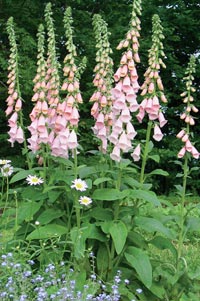Alabama Gardener

We like to think that each gardening season has a beginning and an end, but in truth Nature’s cycles never stop. The leaves you gather up this month will slowly turn to humus during winter, a process that will go much faster if you shred them with your mower. You can use shredded leaves as mulch beneath shrubs, or set them aside until next year, and then dig them into beds that need an extra dose of organic matter. Meanwhile, it’s also time to think about spring, especially if you want to color up your yard with spring-flowering bulbs. Daffodils, tulips and hyacinths will begin growing roots as soon as you plant them, and then explode with blossoms when the weather warms in late winter. These big bulbs often bloom well for but one or two seasons in Alabama gardens, but they are so easy to grow that no garden should be without them. If you have established clumps of daffodils in your yard, this is the ideal time to scatter a bit of fertilizer over their heads. Winter rains will move the nutrients down into the soil, making them available just when the plants need them most.I like to experiment with so-called little bulbs like crocus, grape hyacinth, dwarf iris and last year’s standout, puschkinia, a lovely little blue bloomer I found at Wal-Mart. Pop little bulbs into the ground beneath dogwoods or near azaleas, forsythias, or other spring-flowering shrubs, and expect plenty of intriguing blossoms just as winter winds down. Garlic is a bulb, too, so if you’ve thought about growing your own, now is the time to get started. You can mail-order garlic for planting, or simply buy large bulbs at the supermarket. Break off the largest outer cloves and set them in the garden 3 inches deep with their pointed ends up. Each clove will grow into a small bulb by early summer, and meantime you can snip leaves here and there to chop into winter soups and stews.Back to flowers. Pansies are the leading winter annual, but if you live in south Alabama, you can enjoy dianthus, snapdragons and calendulas through the winter months, too. In central and north Alabama these flowers don’t actually bloom in winter, but when planted in fall they get busy growing big, resilient root systems that pave the way for great color in spring. The same goes for foxgloves and forget-me-nots (myosotis), which must be planted in the fall–and then feel winter’s chill–if they are to bloom in spring. Larkspur and poppies like to be planted in fall, too, and the flowers are so pretty I like to give them a few square feet of space in my best flowerbed. Expect a few seeds to sprout by Christmas, with many more seedlings appearing just in time for Valentine’s Day.Planting bulbs and flowers is fun, but there’s also satisfaction to be found in the vegetable garden by cleaning up dead plants, digging out persistent weeds, and gathering collards, turnips and spinach that have been sweetened by winter’s first frost. If the soil gets dry enough to dig, you can go ahead and prepare planting space for peas and potatoes, the first crops to go into the ground in spring. Cover the prepared soil with a protective mulch of old hay, and you can start planting in spring without lifting a spade.
Mobile native Barbara Pleasant’s newest book, The Southern Garden Advisor, is now available at bookstores. Learn more about Barbara and her work at her website, barbarapleasant.com.
